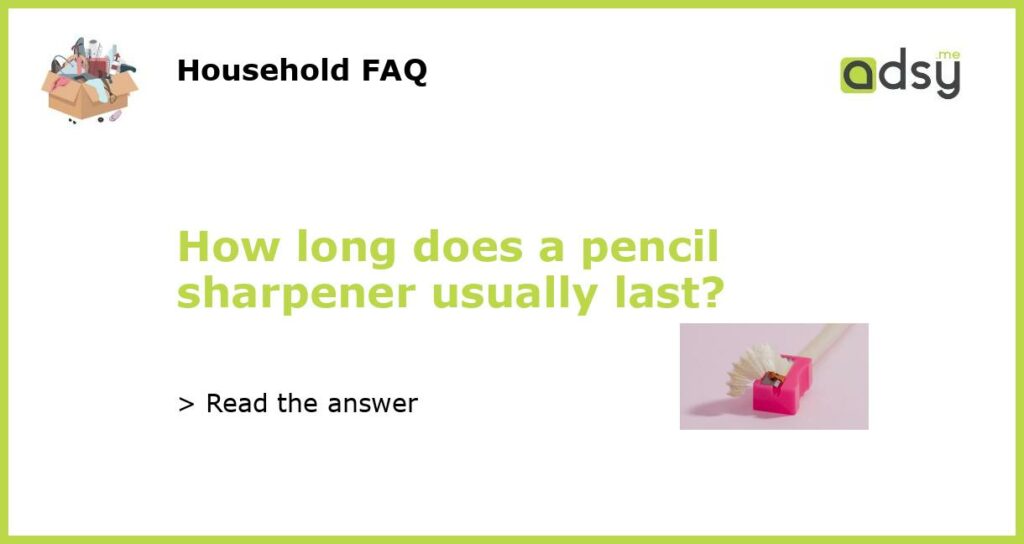Understanding Pencil Sharpeners and Their Lifespan
A pencil sharpener can be a teacher’s best friend or a student’s worst nightmare. If you’re an educator or a student, you know how frustrating it can be to have a sharpener that breaks down in the middle of an important lesson or exam. So, how long does a pencil sharpener usually last? Below, we take a closer look at the different types of pencil sharpeners and their average lifespan.
Mechanical Pencil Sharpeners
Mechanical pencil sharpeners are perhaps the most common type found in schools and offices. They typically come in a plastic or metal casing, and can either be powered by electricity or with a crank handle. These sharpeners are designed to handle frequent use, but the lifespan varies depending on the brand and model. On average, a high-quality mechanical pencil sharpener can last anywhere from 3-5 years with proper maintenance and care.
Electric Pencil Sharpeners
Electric pencil sharpeners are a favorite among those who demand precision and speed. Unlike manual sharpeners, electric sharpeners have an internal motor that rotates the pencil and sharpens it in just a few seconds. However, they are more prone to breakdowns than their manual counterparts. The lifespan of an electric pencil sharpener depends on the brand and how frequently it is used. On average, a high-quality electric sharpener can last anywhere from 2-4 years with proper maintenance and care.
Manual Pencil Sharpeners
Manual pencil sharpeners are the old-school sharpeners found in classrooms and homes. These sharpeners require the user to manually turn the crank handle to grind the pencil tip. While they are the most durable, they are also the slowest and require more effort to use. However, with proper maintenance and care, a high-quality manual pencil sharpener can last for several years.
Factors That Affect the Lifespan of a Pencil Sharpener
Several factors affect the lifespan of a pencil sharpener. These include the brand, the quality of materials used, proper maintenance, and the frequency of use. For example, a cheap pencil sharpener made with low-quality materials is more likely to break down sooner than a high-quality sharpener made with durable materials. Similarly, a sharpener that is cleaned and lubricated regularly is more likely to last longer than one that is neglected.
If you’re in the market for a new pencil sharpener, it’s important to consider the type, brand, and quality of the sharpener. While a high-quality sharpener can last for several years with proper care, a cheap and low-quality sharpener will likely break down sooner than later. Overall, investing in a durable and dependable pencil sharpener can save time, money, and frustration in the long run.





![Swordfish [40287]‘Soft Grip’ Pencil Sharpener [Pack of 2] Assorted Colours ,Yellow,Blue,Green,Red](https://m.media-amazon.com/images/I/4135ixyoXXL.jpg)
